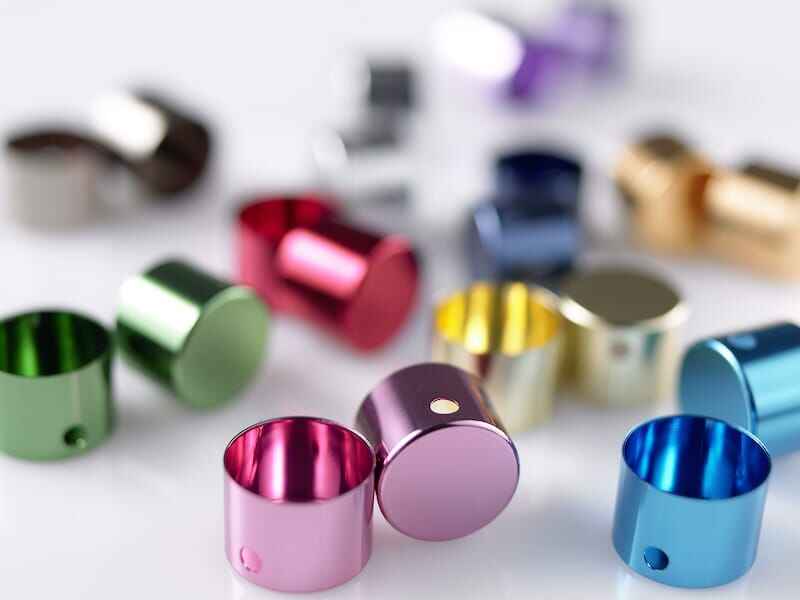Anodizace je důležitý proces, který zvyšuje odolnost a trvanlivost hliníkových výrobků.
Tato elektrochemická technika nejen zlepšuje povrchové vlastnosti hliníku, ale také vytváří ochrannou vrstvu, která výrazně prodlužuje životnost těchto materiálů. V tomto článku si probereme, jak anodizace ovlivňuje hliníkové výrobky, jaké má výhody a jaké faktory přispívají k jejich trvanlivosti.
Proces anodizace spočívá v ponoření hliníku do elektrolytického roztoku, kde se pomocí elektrického proudu vytvoří silná vrstva oxidu na povrchu.
Tato vrstva působí jako bariéra proti korozi, opotřebení a poškození prostředím, čímž se anodované hliníkové produkty stávají ideálními pro různé aplikace, od stavebnictví po spotřební zboží. Zvýšená odolnost anodovaného hliníku vede ke sníženým nákladům na údržbu a prodloužené životnosti produktu, což je obzvláště atraktivní pro výrobce i spotřebitele.
Jednou z hlavních výhod anodizace je její schopnost zlepšit odolnost hliníku proti korozi.
Oxidová vrstva vytvořená během anodizace je velmi odolná vůči oxidaci, což je běžný problém u hliníku vystaveného vlhkosti a agresivním prostředím. Díky prevenci koroze zajišťuje anodizace, že hliníkové produkty si udrží svou strukturální stabilitu a estetický vzhled po dlouhou dobu. To je obzvláště důležité pro průmyslové odvětví, jako je letecký a automobilový průmysl či architektura, kde je výkonnost materiálu kritická.
Kromě odolnosti proti korozi anodizace také zvyšuje odolnost hliníkových produktů proti opotřebení.
Anodizovaný povrch je tvrdší než podkladový hliník, díky čemuž je méně náchylný k škrábancům a oděru. Tato vlastnost je zvláště výhodná pro výrobky, které jsou často manipulovány nebo používány v náročných prostředích. Díky tomu anodizované hliníkové komponenty odolávají nárokům každodenního používání a zároveň si udržují svou funkčnost a vzhled.
Další významnou výhodou anodizace je její schopnost poskytnout přizpůsobitelný povrchový úpravu.
Anodizovaný hliník lze obarvit do různých barev, což umožňuje výrobcům vytvářet vizuálně atraktivní výrobky, které splňují estetické požadavky, aniž by byla ohrožena jejich odolnost. Tato vlastnost anodizace nejen zvyšuje prodejnost výrobků, ale také vyhovuje preferencím spotřebitelů ohledně personalizovaných a esteticky působivých návrhů.
Kromě toho je anodizace ekologický proces.
Na rozdíl od tradičních povlaků, které mohou uvolňovat škodlivé chemikálie do životního prostředí, anodizace využívá netoxický elektrolytický roztok. Vzniklá oxidová vrstva je rovněž inertní a recyklovatelná, čímž přispívá k udržitelným výrobním postupům. Vzhledem k tomu, že průmysl stále více klade důraz na udržitelnost, anodizovaný hliník představuje vhodnou volbu pro ekologicky uvědomělé spotřebitele a firmy.
Závěrem lze říci, že anodizace významně ovlivňuje trvanlivost hliníkových výrobků tím, že zvyšuje jejich odolnost proti korozi a opotřebení, umožňuje vlastní úpravy povrchu a podporuje ekologicky příznivé postupy.
Jak se průmysl nadále vyvíjí, poptávka po odolných a udržitelných materiálech pravděpodobně vzroste, čímž se upevní pozice anodicky oxidovaného hliníku jako preferovanou volbou pro výrobce i spotřebitele. Stálý vývoj technologií a technik anodické oxidace dále vylepší výkon a uplatnění anodicky oxidovaného hliníku a zajistí jeho význam v budoucnosti materiálového inženýrství.
Obsah
- Anodizace je důležitý proces, který zvyšuje odolnost a trvanlivost hliníkových výrobků.
- Proces anodizace spočívá v ponoření hliníku do elektrolytického roztoku, kde se pomocí elektrického proudu vytvoří silná vrstva oxidu na povrchu.
- Jednou z hlavních výhod anodizace je její schopnost zlepšit odolnost hliníku proti korozi.
- Kromě odolnosti proti korozi anodizace také zvyšuje odolnost hliníkových produktů proti opotřebení.
- Další významnou výhodou anodizace je její schopnost poskytnout přizpůsobitelný povrchový úpravu.
- Kromě toho je anodizace ekologický proces.
- Závěrem lze říci, že anodizace významně ovlivňuje trvanlivost hliníkových výrobků tím, že zvyšuje jejich odolnost proti korozi a opotřebení, umožňuje vlastní úpravy povrchu a podporuje ekologicky příznivé postupy.

